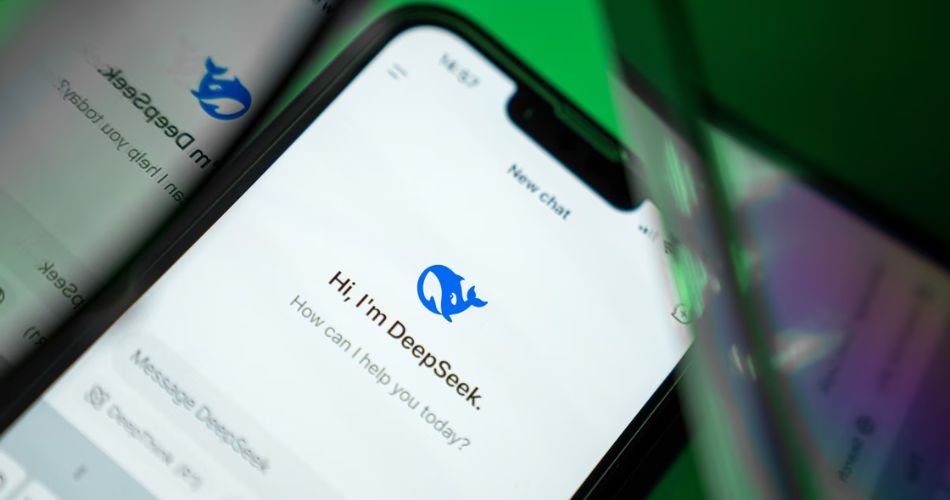When users first interact with DeepSeek, one common question arises: why can’t I upload images to DeepSeek? DeepSeek is a rapidly emerging AI platform primarily focused on natural language processing (NLP), text generation, summarization, translation, and code interpretation. It’s not designed as a multimodal model like some others in the market. Rather, DeepSeek operates within a text-only framework, which means its functionality centers around textual input and output. This limitation might surprise users who have become accustomed to AI models like GPT-4o or Gemini that can process images alongside text, but DeepSeek’s core purpose is different. It aims to deliver high precision and contextually rich text generation without branching into image recognition or analysis.
Clarifying the Misconception Around Image Uploads
The confusion often stems from the assumption that all AI models offer the same capabilities. Because many AI platforms now support image inputs, users naturally expect DeepSeek to do the same. However, DeepSeek doesn’t currently include any infrastructure or interface support for uploading, interpreting, or analyzing visual files. There’s no “upload” button, no drag-and-drop functionality, and no back-end feature supporting image recognition. When people search for answers to “why can’t I upload images to DeepSeek,” they are often disappointed to learn that the feature simply doesn’t exist—nor has it been announced as a development priority yet.
DeepSeek’s Strength in Language Processing
What makes DeepSeek powerful is its strength in textual analysis and generation. Its deep understanding of language structure, semantics, and multilingual processing allows it to outperform even some larger models in specific tasks related to academic writing, research summarization, and programming help. The creators of DeepSeek have concentrated their efforts on enhancing these features, which means all development resources have been invested in optimizing text-related tasks rather than dividing focus between text and vision models. So, while image uploading isn’t available, what DeepSeek does offer is unmatched accuracy in understanding and generating high-level written content.
How DeepSeek Differs from Multimodal AI Platforms
Unlike platforms such as OpenAI’s GPT-4o, Google’s Gemini, or Anthropic’s Claude 3, DeepSeek is not classified as a multimodal AI. Multimodal models are designed to interpret multiple input types—like text, images, video, and even audio. They can look at a chart, break it down, and explain what’s happening. DeepSeek, by contrast, is built solely around language tasks. This decision allows it to remain lightweight, responsive, and focused, but it also limits the platform from interacting with anything that isn’t written or typed. This difference is key to answering the question of “why can’t I upload images to DeepSeek?”—because it was never designed for visual tasks in the first place.
Technical Limitations That Prevent Image Uploading
There are technical reasons why image uploading isn’t supported. First, DeepSeek does not contain any visual recognition modules in its neural architecture. There’s no backend system ready to decode pixels into meaningful data. Second, image uploading requires an entirely different kind of model training and hardware optimization. Visual processing demands higher GPU workloads, different datasets, and integration with tools like optical character recognition (OCR) or convolutional neural networks (CNNs). Since DeepSeek is trained predominantly on textual data, incorporating image functionality would require an architectural overhaul, not just a software update.
User Interface and Missing Features
Some users may mistakenly believe that the image upload feature is “hidden” or broken. However, no part of the DeepSeek UI offers any image interaction options. If you’re not seeing an upload button, it’s not a glitch—it’s intentional. DeepSeek does not include interface components for file handling, file previews, or file parsing. Even in beta versions or API integrations, image support has not been introduced. This again reinforces that DeepSeek’s current and future focus remains grounded in text understanding, not visual content.
Browser Compatibility or Device Errors Are Not the Issue
When users encounter upload problems on websites, they often suspect it’s due to browser incompatibility, internet lag, or device restrictions. While these issues might be valid elsewhere, they don’t apply here because DeepSeek has no image upload function to begin with. It’s not a bug. There is simply no image processing pathway built into the model or the user interface. So if you’re wondering why uploading an image fails on DeepSeek, the answer is straightforward—it’s not an available feature, regardless of browser or internet connection.
How Users Can Work Around the Lack of Image Support
Even without direct image uploading, there are still ways to utilize DeepSeek for image-related tasks—albeit indirectly. If you have an image containing text (like a screenshot, scanned document, or photo of handwritten notes), you can use OCR software to extract the text. Free tools like Google Lens, Adobe Scan, or online OCR converters can turn those visuals into plain text. Once the text is extracted, it can be copied and pasted into DeepSeek for further interpretation or analysis. It’s not seamless, but it’s a viable workaround for users needing to process visual data.
Possible Future Updates to Include Visual Input
Although there’s no image support now, that doesn’t mean it will stay that way forever. The AI landscape evolves quickly, and user demand can drive development decisions. If enough users continue asking, “why can’t I upload images to DeepSeek?” the developers may take notice. Future updates might include multimodal capabilities, particularly as vision models become easier to implement and more computationally efficient. It’s not a guarantee, but it’s a realistic possibility as AI trends lean increasingly toward unified platforms that combine text, image, and voice inputs.
User Requests and the Power of Feedback
The developers behind DeepSeek actively engage with their community through forums, surveys, and GitHub issues. If image uploading is a feature you truly need, there’s power in letting the creators know. Feature request threads often guide the roadmap for future updates. So if you’re wondering why this functionality hasn’t been added, consider reaching out, upvoting related suggestions, or adding your own voice to the conversation. The more people ask, the more likely it is that image support becomes a priority.
Security and Privacy Considerations with Image Uploads
One often overlooked reason for limited image support on platforms like DeepSeek is data security and privacy. Images can contain sensitive personal information—faces, license plates, documents, etc.—and processing them requires strict compliance with privacy laws such as GDPR and CCPA. To handle this kind of input responsibly, the developers would need to implement advanced data sanitization, encryption, and user consent mechanisms. This additional burden might delay or even prevent the feature from being rolled out in the near future.
What Other Tools Can Be Used Alongside DeepSeek?
If your workflow involves both text and images, consider using DeepSeek in combination with other tools. For instance, start by running your image through a vision-capable AI like ChatGPT-4o or Google Gemini, then copy the resulting text to DeepSeek for further explanation or deep analysis. This hybrid approach allows you to take advantage of DeepSeek’s strength in language processing without waiting for future updates to support images natively.
Educating Users About Platform-Specific Capabilities
It’s important for users to understand that not all AI models are built the same. Each has its own strengths, limitations, and intended use cases. Asking “why can’t I upload images to DeepSeek?” is a great question—but it’s based on the assumption that DeepSeek is trying to do what multimodal platforms are doing. In reality, DeepSeek was built for a different purpose. Educating users about these distinctions can help reduce frustration and encourage more informed usage of the platform.
Conclusion
Why can’t I upload images to DeepSeek? Simply put, because it is a text-based model that was never designed to process visual content. DeepSeek thrives in the world of written language—summarizing, translating, coding, and analyzing text with remarkable precision. It does not support image input because it lacks the technical framework, UI components, and model training required to handle visual data. While this may limit its versatility in some use cases, it also enables it to provide a deeply focused and accurate experience in language processing. Users seeking visual analysis will need to look elsewhere or combine DeepSeek with OCR tools or multimodal platforms. Still, the demand for image support is growing, and with enough user feedback, future updates may expand DeepSeek’s capabilities into the visual realm.






